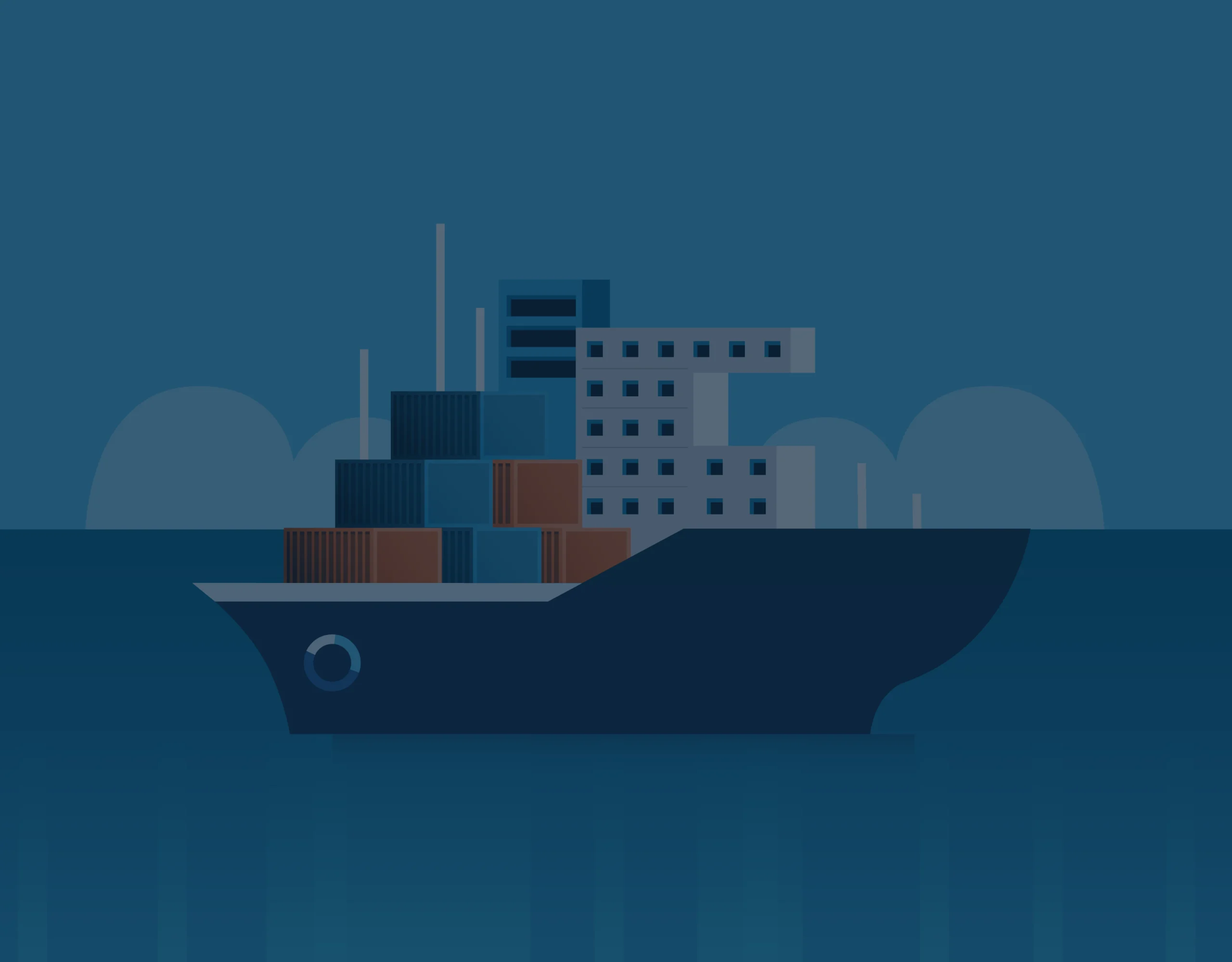Tariffs are shaping a new reality for manufacturers. The 2025 strategy introduces import taxes across numerous sectors, making adaptation the new normal. These policy changes don’t just affect numbers on paper, they ripple across entire industries, forcing companies to rethink operations and strategy.
The changes are reshaping industries from food and beverage to fashion, influencing costs, pricing strategies, supply chains, and manufacturing decisions. In a world where components for a single product are sourced from multiple countries, even small tariff adjustments can lead to significant operational and financial shifts.
But technology is rewriting the rulebook. In this blog, we explore how manufacturing leaders can move beyond reactive cost-cutting to build long-term resilience using digital tools. From automation to AI, tech offers practical pathways to reduce the impact of tariffs, optimize sourcing, and future-proof operations.
How tariffs impact manufacturing operations
Tariffs affect manufacturers at nearly every operational layer. Here’s a breakdown of the most pressing impacts:
1. Cost increases on raw materials
Tariffs can increase the cost of imported goods and contribute to price volatility, making it a persistent factor in global trade. Manufacturers that rely on inputs such as steel, aluminum, semiconductors, or rare earth minerals can experience significant cost increases when tariffs are applied. For instance, recent tariff measures on electronics components have driven up input costs for automotive and electronics producers by double-digit percentages. These shifts influence pricing strategies, supply chains, and overall industry dynamics, requiring companies to assess whether to absorb the costs or adjust prices for consumers.
2. Supply chain & logistical disruptions
Tariff volatility has also created new supply chain challenges, prompting a shift from a purely cost-focused sourcing approach to one that emphasizes resilience and trust. Suppliers in traditionally cost-effective regions may now pose added risks, leading manufacturers to explore alternative sources, sometimes with different capabilities or infrastructure. Building strong, reliable supplier relationships has become essential for ensuring stability, driving revenue, and supporting long-term competitiveness.
The 2025 tariff changes have also added complexity to logistics planning. Companies must now account for factors such as country of origin, tariff classifications, customs procedures, and updated documentation requirements. Differing tariff rates across countries require careful material sourcing decisions, while evolving trade flows are reshaping logistics networks and partnerships. In response, businesses may need to adjust inventory strategies, increase safety stock, and prepare for potential customs delays or regulatory compliance challenges.
3. Profit margin pressure
With the increase in tariffs, manufacturers must decide whether to absorb tariff-related costs or pass them on to customers. Neither option is appealing. This decision may largely depend on how much pricing power, competition and demand the company holds. For example, medical equipment can increase their prices with minimal volume loss as they have a strong demand and product differentiation. Whereas, the furniture industry may face low margins even if the tariff levels are lower. The BHI survey data shows that 10% tariffs make trade unviable for just 5% of the medical equipment and industrial machinery companies compared to 50% in the furniture industry. The absorb vs pass-on pricing dilemma, especially for highly competitive industries, is a growing pressure and forces companies to rethink their profit margin strategy.
4. Geographic manufacturing migration
A growing number of companies are shifting operations to countries with more favorable tariff conditions. While tariffs apply to most trading nations, some carry higher rates, which can significantly increase costs. As a result, manufacturers are diversifying their supply chains, moving production from higher-tariff countries to alternatives such as Vietnam and India. This shift reflects a broader strategy to optimize cost structures, reduce exposure to tariff risk, and maintain competitive pricing.
Turning to tech: Building a tariff-resilient manufacturing model
In today’s evolving tariff environment, digital transformation has become a strategic priority. The following technologies can help manufacturers manage costs, enhance agility, ensure compliance, and develop resilient operating models.
A. Visibility & spend management
Digital platforms now offer real-time insights and end-to-end visibility across your supply chain. By analyzing spend by supplier, category, and region, manufacturers can immediately identify where tariffs are biting hardest. Supply chain mapping can help identify potential disruptions before they impact operations.
Benefits:
- Improved cost forecasting
- Smarter procurement decisions
- Building a risk-aware sourcing strategy
B. Cloud for flexibility and global scalability
Cloud technology underpins many of the tools driving tariff resilience. Cloud-based ERP can be rolled out quickly across new facilities or regions, supporting rapid shifts in manufacturing or sourcing locations. Cloud based collaboration portals built into the ERP allow for the quick onboarding of suppIiers from anywhere in the world without the need for complex integrations. It provides centralized data access which gives procurement, finance, and logistics teams a unified way to track tariff exposure across global operations. As many companies have teams working across borders, using cloud technology ensures that decision-makers have access to the same data, no matter which city they are working from. This real-time collaboration between internal teams and external partners is vital for global scalability.
Additionally, always-on updates (systems automatically and continuously updating themselves on the cloud) ensure that even if customs and tax regulations keep changing, you are compliant with the regulations across the different jurisdictions. Another benefit is that amidst the pressure of managing profit margins, the cloud offers flexible cost models such as pay-as-you-go which help you manage the tariffs better.
C. Automation for efficiency and compliance
Automation reduces manual effort and human error while improving speed and consistency in most, if not all, stages of the process. Procurement/AP automation can be used for invoice validation and payment approval across workflows, which not only reduces errors and flags compliance issues but also ensures accurate tariff application.
Tools can also be used to automate customs processes, such as electronic filing and automated document generation, which help avoid delays and penalties. Self-service onboarding platforms can bring on new suppliers from across borders while maintaining compliance with local regulations. The automation can also help audit trails, approve workflows and detect fraud which helps companies manage any financial risk when scaling into new markets.
D. Data- and AI-driven insights
Data analytics turn raw information into actionable intelligence. Modern data platforms unify supplier, logistics, and spend data across geographies and provide a consolidated and clearer view for tariff strategy. Advanced analytics and predictive models can also be used to analyze historical trends in cost fluctuations, identify regions with risks, and flag sourcing inefficiencies. AI-powered scenario planning could also simulate tariff impacts on specific products/regions, which enables proactive decision-making. It can also recommend cost-saving opportunities, forecast price trends and disruptions, and optimize procurement strategies that humans might miss.
Real-world examples and strategic shifts
Technology is driving significant operational changes in global manufacturing, influenced in part by evolving tariff landscapes. For example, Apple has expanded production to India, Vietnam, and Thailand, diversifying its manufacturing footprint. This transition has required substantial digital infrastructure updates to maintain continuity and compliance across new suppliers and facilities.
Organizations are also leveraging AI to navigate the complexity of tariff changes. From processing updates across thousands of U.S. customs product categories in real time to simulating alternative materials or suppliers, AI supports faster and more informed decision-making.
These developments highlight that adapting to tariff-related changes goes beyond cost management, it involves building flexible, technology-enabled global operations. Many CFOs, COOs, and CIOs are now taking a proactive role in using digital tools to strengthen supply chain resilience and operational adaptability.
Operational readiness in a tariff-heavy environment
While tariffs remain a factor in global trade, manufacturers have a range of digital tools to help them adapt. Capabilities such as real-time visibility, AI-driven scenario planning, cloud-based systems, and automation can support efforts to:
- Control costs with greater precision
- Maintain compliance across multiple jurisdictions
- Diversify sourcing strategies
- Strengthen long-term operational resilience
By leveraging these technologies, organizations can move from a reactive approach to a more proactive, data-driven strategy for managing tariff impacts. Fortude provides a spectrum of digital solutions that help manufacturers navigate these challenges, from improving agility and compliance to building tariff-resilient business models. Contact us to learn how we can support your business in adapting to evolving global trade conditions.
FAQs
Tariffs impact multiple layers of operations, including procurement, production costs, logistics, and pricing strategies. Supply chains may face delays, compliance complexities, and increased administrative workload. Profit margins and geographic sourcing decisions are also influenced, forcing companies to weigh whether to absorb higher costs or adjust prices for customers while maintaining market competitiveness.
Digital tools such as real-time visibility platforms, AI-driven analytics, cloud-based ERP, and automation streamline procurement, monitor spend, forecast costs, and simulate alternative sourcing strategies. These technologies enable manufacturers to proactively manage tariffs, improve operational agility, maintain compliance, and make data-driven decisions to mitigate financial and operational risks across global supply chains.
Fortude provides a spectrum of digital solutions, including Cloud implementation, analytics & AI, automation, and end-to-end supply chain visibility. These tools help manufacturers control costs, ensure compliance, diversify sourcing, and strengthen operational resilience. By integrating technology with strategic expertise, Fortude empowers businesses to navigate evolving trade conditions while maintaining agility, efficiency, and competitive advantage.
Subscribe to our blog to know all the things we do


